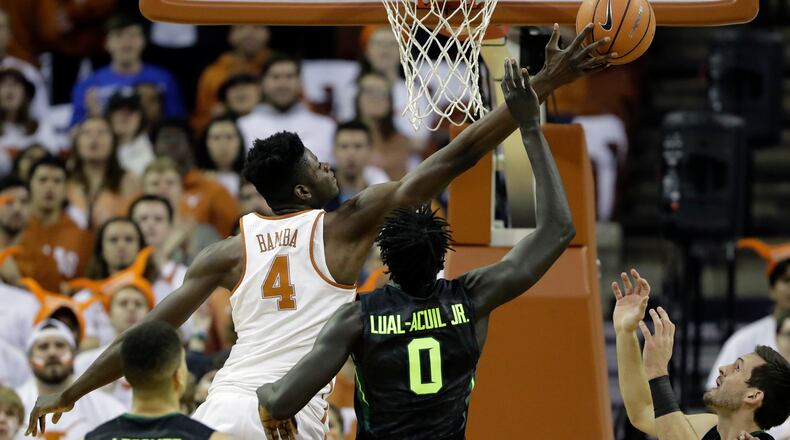Mohamed Bamba is a dominant defensive big man for the Texas Longhorns in large part because of a massive wingspan measured at 7-feet-9 -- longer than any current NBA center -- with a standing reach of 9-foot-6. That extraordinary length helps Bamba produce the seventh-highest block percentage in NCAA Division I (per Kenpom.com), gobble up a high percentage of defensive and offensive rebounds, produce steals at a good rate for his position and finish strong on shots around the basket (73.5 percent on 102 attempts per Synergy Sports).
If Bamba can do all of those things in the NBA, then he will prove worthy of a high lottery pick because he would be a game-changing defensive big. But If Bamba’s defensive ability doesn’t translate to the NBA, his overall impact could be limited because there are so many questions about his offensive game: poor free-throw attempt rate, bad shooting on 3-pointers and free throws, low usage rate, low assist rate and inefficient production as a roll man and on post-ups.
I went to see Bamba play against West Virginia last weekend but he was out with an ankle injury. Bamba also sat out against Iowa State Wednesday in the first round of the Big 12 tournament. After the game I asked Texas coach Shaka Smart if he’s seen improvement in Bamba’s offense.
“Big time,” Smart said. “And there is so much room for growth there offensively, too. So much room. But he’s going to be a terrific 3-point shooter. He handles the ball pretty well for someone that size. But he’s got to understand he’s so tall he’s got to get a little lower. But he’s come a long way.”
The NBA projection for Bamba includes an element that’s common for big men. What happens when Bamba no longer has a big physical advantage over his foes? Will he respond to the challenge and play harder?
Kevin O'Connor, writing at The Ringer, addressed those questions in a January piece:
“One scout noted how well Bamba tends to respond to challenges, citing a December game in which Tennessee State’s beefy big man Christian Mekowulu looked like Shaq at times against Bamba before the Texas center ratcheted up his defensive intensity in the second half, leading to a Longhorns win. A few weeks later, against Iowa State, freshman big man Cameron Lard also outplayed Bamba to start the game; but Bamba again turned up his aggression to 11 at the end of regulation and in overtime. Ideally, Bamba would bring intensity all game. But there’s something to be said for a player who rises during an adverse situation.”
Bamba played for Westtown School, a national prep powerhouse in Pennsylvania. His teammates included Brandon Randolph, a freshman at Arizona, and top 2018 recruits Cameron Reddish (Duke) and Jake Forester (Indiana).
Westtown played a national schedule but obviously no opponent had anyone who could match Bamba physically.
“High school he could kind of go 70, 80 percent and still dominate,” Smart said. “I saw him play a high school game one time where I didn’t think he played particularly hard but he had a triple-double. But he’s really come a long way.”
The three strongest non-conference opponents for Texas were Duke, Gonzaga and Michigan. Bamba played a total of 95 minutes in those games and produced 30 rebounds (four offensive), 11 blocks, zero assists and 28 points on 27 shots.
The Longhorns lost to Duke in overtime after Bamba fouled out near the end of regulation. Against Gonzaga, Bamba’s long wingspan helped Texas force a turnover that led to a game-tying shot in the final seconds and his challenge prevented a clean look for a game-winner (the Longhorns lost that one in OT, too).
One positive sign for Bamba is that his production and efficiency have remained high in 16 conference games. Kenpom.com ranks the Big 12 as the best conference in Division I.
“All the best players have one thing in common: They get better fast,” Smart said. “Mo certainly is in that category. He is very, very cerebral. But when he got here he had to learn about maximum effort and continuing to play no matter what happens. He’s gotten way, way better at that.”
About the Author
Keep Reading
The Latest
Featured


